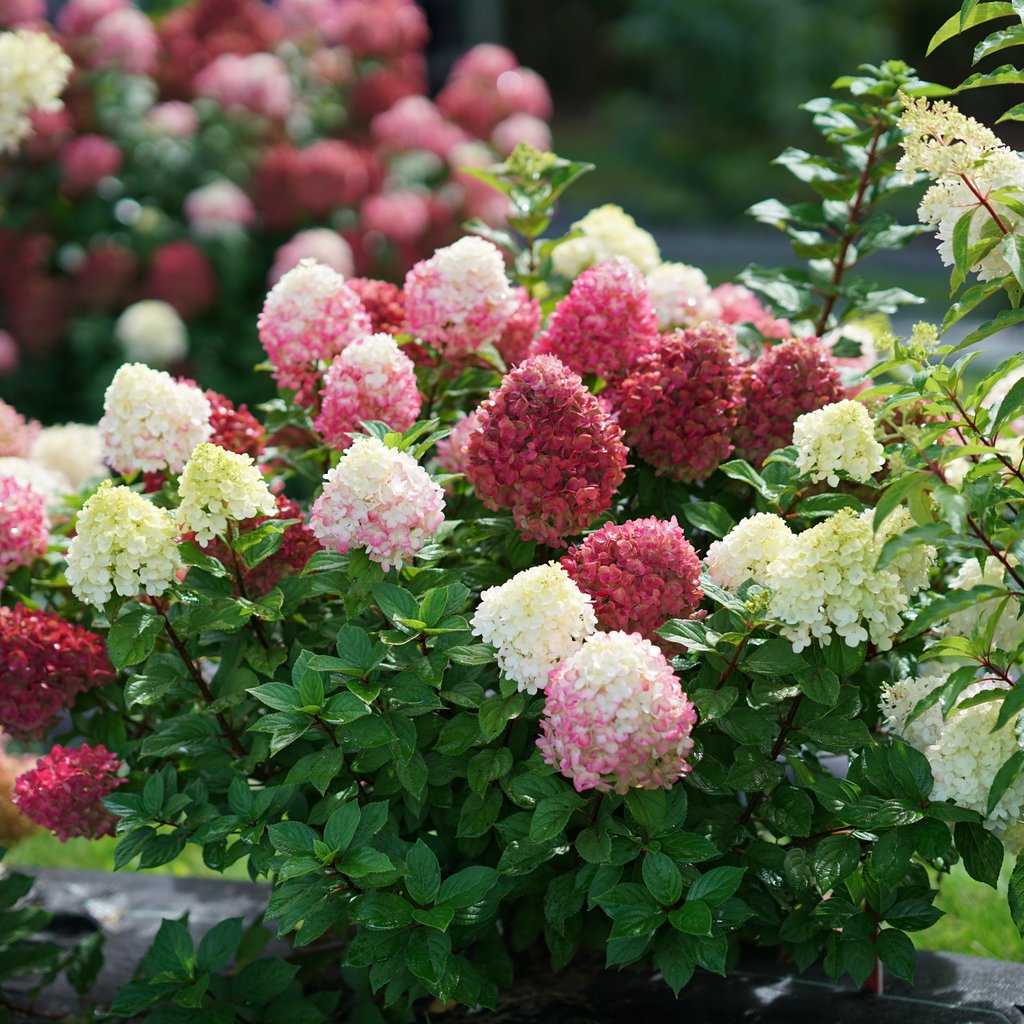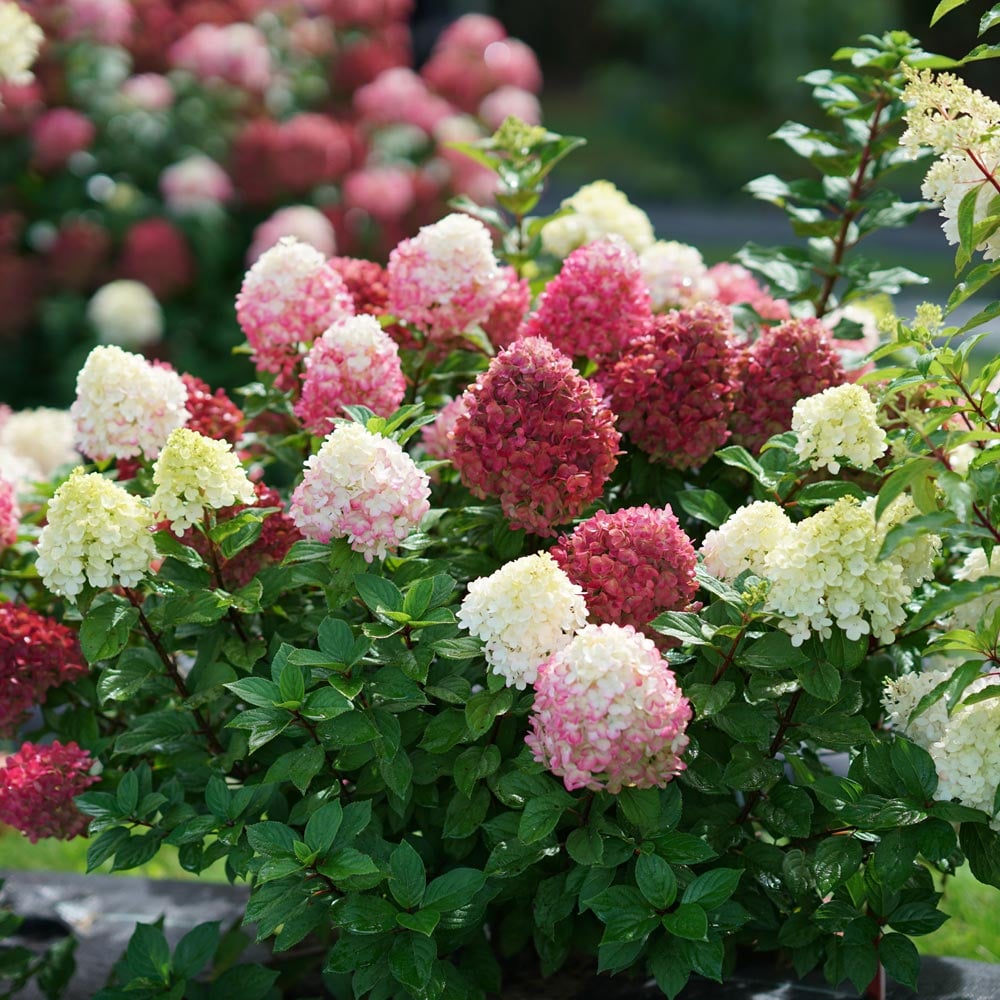Little Lime Hydrangeas: The Perfect Shadeloving Shrub
Little Lime Hydrangeas: The Perfect ShadeLoving Shrub
If you're looking for a shade-loving shrub that will add a pop of color to your garden, look no further than the Little Lime hydrangea. This compact and easy-care plant is a favorite among gardeners for its beautiful lime green flowers that turn pink in the fall.
In this blog post, we'll take a closer look at Little Lime hydrangeas, including their care requirements, planting tips, and potential problems. We'll also provide some ideas for how you can use these shrubs in your own garden.
What is a Little Lime hydrangea?
Little Lime hydrangeas (Hydrangea paniculata 'Little Lime') are a dwarf variety of the popular Limelight hydrangea. They grow to be 3-5 feet tall and wide, making them a good choice for small gardens or containers.
Little Lime hydrangeas have lime green flowers that bloom in summer. As the flowers age, they turn pink and burgundy. The flowers are borne on strong stems, so they don't droop.
Little Lime hydrangeas are hardy in USDA zones 3-8. They prefer full sun or part shade, but they can tolerate some afternoon shade in hot climates.
How to care for Little Lime hydrangeas
Little Lime hydrangeas are relatively easy to care for. They need well-drained soil and regular watering. You can fertilize them in spring with a balanced fertilizer.
Little Lime hydrangeas don't need to be pruned often. A light pruning in late winter or early spring will help to keep the plant compact and encourage new growth.
Pests and diseases
Little Lime hydrangeas are generally resistant to pests and diseases. However, they can be susceptible to aphids, scale, and powdery mildew. If you see any pests or diseases, you can treat them with an appropriate insecticide or fungicide.
How to use Little Lime hydrangeas in your garden
Little Lime hydrangeas are versatile plants that can be used in a variety of ways in your garden. They can be planted as a stand-alone shrub, or they can be used in borders, hedges, or mass plantings.
Little Lime hydrangeas are also a good choice for cut flowers. Their long-lasting flowers make them a popular choice for bouquets and arrangements.
Here are some ideas for how you can use Little Lime hydrangeas in your garden:
- Plant them as a hedge or screen.
- Use them to add color to a shady border.
- Plant them under a tree to provide dappled shade.
- Use them as a backdrop for other flowers.
- Cut the flowers for bouquets or arrangements.
Conclusion
Little Lime hydrangeas are a beautiful and easy-care shrub that is perfect for adding color to your garden. Whether you plant them as a stand-alone shrub, in a border, or in a container, these shrubs are sure to add a touch of elegance to your outdoor space.
Little Lime hydrangeas are a beautiful and versatile plant that can thrive in a variety of conditions, including shade. If you're looking for a hydrangea that will add a touch of elegance to your shady garden, Little Lime is a great option.
These hydrangeas are known for their delicate, lime-green flowers that bloom in late summer and early fall. They can grow to be 3-5 feet tall and wide, making them a good choice for smaller gardens. Little Lime hydrangeas are also relatively easy to care for, requiring only moderate water and fertilizer.
If you're interested in learning more about Little Lime hydrangeas in shade, I recommend visiting . This website has a wealth of information about this plant, including planting tips, care instructions, and even a forum where you can ask questions from other gardeners.
FAQ of little lime hydrangea in shade
Q: Will little lime hydrangea grow in shade?
A: Yes, little lime hydrangea can tolerate partial shade, but it will bloom best in full sun. If you plant it in full shade, the flowers may be smaller and less colorful.
Q: What is the best soil for little lime hydrangea in shade?
A: Little lime hydrangea prefers well-drained soil that is rich in organic matter. The soil pH should be slightly acidic, between 5.5 and 6.5.
Q: How much water does little lime hydrangea need in shade?
A: Little lime hydrangea needs regular watering, especially during the first year after planting. The soil should be kept moist, but not soggy.
Q: How do I fertilize little lime hydrangea in shade?
A: Little lime hydrangea should be fertilized in early spring and again in late summer. Use a balanced fertilizer, such as 10-10-10, and follow the directions on the label.
Q: How do I prevent pests and diseases in little lime hydrangea in shade?
A: Little lime hydrangea is relatively pest- and disease-resistant. However, it can be susceptible to aphids, spider mites, and powdery mildew. If you see any pests or diseases, treat them immediately with an appropriate pesticide or fungicide.
Image of little lime hydrangea in shade
- Image 1: A small, bushy little lime hydrangea plant in full bloom, with its chartreuse flowers cascading over the sides of the pot. The plant is in a shady spot under a tree, and the leaves are a deep green.
- Image 2: A close-up of the flowers of a little lime hydrangea, showing their delicate chartreuse color and creamy white overtones. The flowers are arranged in a conical shape, and they are surrounded by dark green leaves.

- Image 3: A row of little lime hydrangea plants in a shady garden bed. The plants are all in bloom, and their flowers are a bright chartreuse color. The leaves of the plants are a deep green, and they provide a nice contrast to the flowers.

- Image 4: A little lime hydrangea plant in a pot on a patio. The plant is in full bloom, and its flowers are a bright chartreuse color. The plant is surrounded by other plants, including ferns and hostas, which provide some shade.
- Image 5: A little lime hydrangea plant in a shady spot in a woodland garden. The plant is in full bloom, and its flowers are a bright chartreuse color. The leaves of the plant are a deep green, and they provide a nice contrast to the flowers.

Post a Comment for "Little Lime Hydrangeas: The Perfect Shadeloving Shrub"